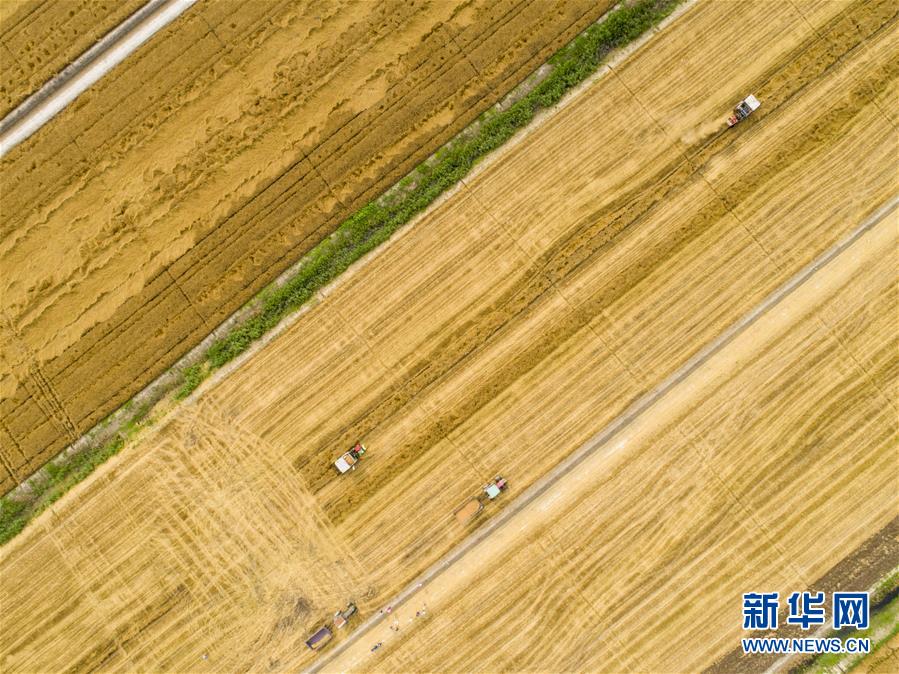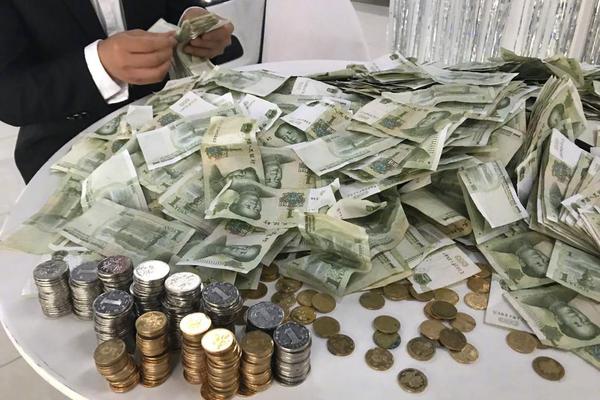GIFs are the fundamental building blocks of our digital existence. Whether they are in texts, tweets, or articles, GIFs are now a staple of how we communicate in the modern world.
But now GIFs are making their way to a new frontier: scientists have finally figured out how to store and retrieve them from bacterial DNA.
SEE ALSO:A new video shows you exactly what it looks like when DNA replicatesResearchers at Harvard Medical School used CRISPR, a new, incredibly precise and relatively cheap gene sequencing tool, to encode Eadweard Muybridge's 19th Century animation of a running horse, essentially the world's first GIF, inside bacterial DNA. (Writers note: NyanCat would have been our choice.)
While putting the animation on DNA is a feat within itself, impressively (and perhaps more importantly) researchers only made a few errors while sequencing the bacteria's genome to recreate the running horse. This means that the recording DNA can capture and replay events in the order in which they occurred. Their work, which was funded by the National Institutes of Health, was published this week in the journal Nature.
While this sounds like a breakthrough for GIF kind — after all, we can't recall a GIF being used in quite this way before — there are much larger implications medical science here.
"The point is not to store videos in bacteria," said Harvard Medical School neuroscientist Seth Shipman, in a video interview.
"We used the video because it's a good example of a complex piece of information that has both many parts to it (that is, many pixel values) and a time component that was organized over time. So, it was a good way for us to test if the CRISPR adaptation system that we're using could actually acquire enough information that we could go in and sequence the bacteria after we had encoded it and reconstruct the movie."
Shipman and his team's choice of a GIF as DNA storage test media is not surprising when you look at their long-term goal of biological recording.
Scientists can only see so far into their human body and its systems. No one knows, for instance, how neurons, which start out unspecialized in young brains, develop into distinct types of neurons.
But what if a cell with access to the brain could watch and record that development from day one and then, when the brain is matured, be extracted and, through CRISPR genome sequencing, play back the entire evolution of a neuron? It's only a start but this bacterial-encoded gif could be on small step toward making that dream a reality.
To test the time-based recording capabilities of biological DNA, Shipman's team fed in to the bacterial DNA strands the galloping horse GIF frame-by-frame over the course of five days.
As Shipman explained it in the video, the frames were all retrieved in their proper order, which means they could play back the GIF and still see the galloping horse, not a disjointed jumble of events. The system "captures the timing information of different molecular events," he said.
DNA typically stores the blueprint of biological organisms, but scientists have, in recent years, started investigating its data storage capabilities, especially the notion that you can store vast amounts of data in a molecule-sized space. Plus, when DNA is separated from a living organism, or that organism dies out around it, and the DNA dries out and is protected from the light (as it is in fossils), that data can be retrieved thousands of years later.
 The Harvard team also sequenced the image of a hand onto biological DNA and then retrieved it.Credit: Harvard Medical School
The Harvard team also sequenced the image of a hand onto biological DNA and then retrieved it.Credit: Harvard Medical SchoolRecent studies, though, have focused on synthetic DNA, which allows for similar storage in tiny spaces capabilities, but without the concern of data longevity outside an organism and in the light.
Last year researchers stored an entire OK Go music video on synthetic DNA and earlier this year, scientists at Columbia University stored and retrieved megabytes of data on synthetic DNA. Both methods, though were time-consuming and expensive. The integration of the CRISPR system holds out the promise of affordable and accurate storage and retrieval from biological systems.
"This recent result is pretty exciting in that it used genomic DNA editing techniques to 'log' data and store it in a cell's genome," said Luis Ceze, an associate professor of computer science and engineering at the University of Washington who worked on the OK Go DNA Storage project. "This can enable cell-based 'living sensors' that log information."
Ceze added, though, that the Harvard team's work is no way competitive with synthetic DNA storage systems. While Ceze hopes to build DNA-based storage that one day rivals our best Solid-State Drives, Shipman's work is about recording tiny bits of data in sequencewithin a cell. "You would not use it to store movies, but I would use synthetic DNA to store movies," said Ceze.
Ultimately, researchers want to place these engineered cells inside living organism where they can automatically record events (or changes) and then remove the smart cells and decode the DNA-stored information for full, sequential play back. The currently technology, however, required Shipman's team to manually enter the information. No one has trained the DNA and host cells to record on their own.
But that time is coming and, someday, our cells may be grabbing viral moments, literally, and playing them back as GIFs (or more).
TopicsInnovations
(责任编辑:探索)
 Nate Parker is finally thinking about the woman who accused him of rape
Nate Parker is finally thinking about the woman who accused him of rape How to buy concert tickets on TikTok
How to buy concert tickets on TikTok Here's why 'Dream Scenario' pays tribute to the Talking Heads
Here's why 'Dream Scenario' pays tribute to the Talking Heads 'Grand Theft Auto 6' trailer reveal set for December
'Grand Theft Auto 6' trailer reveal set for December Tesla's rumored P100D could make Ludicrous mode even more Ludicrous
Tesla's rumored P100D could make Ludicrous mode even more LudicrousIvanka Trump's unpaid interns share cringeworthy financial advice
 Ivanka Trump's interns have some questionable advice for students worried they can't afford an unpai
...[详细]
Ivanka Trump's interns have some questionable advice for students worried they can't afford an unpai
...[详细]WhatsApp now lets you log in with passkeys on Android
 Constantly in fear that you'll forget your WhatsApp password? Worry no more, the app now lets you lo
...[详细]
Constantly in fear that you'll forget your WhatsApp password? Worry no more, the app now lets you lo
...[详细]eharmony is having a membership sale: Save 60% off a Premium Membership plan
 SAVE 60%:As of Oct. 25, you can save up 60% off on eharmony's Premium Memberships, starting at $14.3
...[详细]
SAVE 60%:As of Oct. 25, you can save up 60% off on eharmony's Premium Memberships, starting at $14.3
...[详细]How to buy concert tickets on TikTok
 TikTok has undoubtedly made its presence known in the music industry. A partnership with Ticketmaste
...[详细]
TikTok has undoubtedly made its presence known in the music industry. A partnership with Ticketmaste
...[详细]Darth Vader is back. Why do we still care?
 They saved the best for last in the first official trailer for Rogue One: A Star Wars Story, release
...[详细]
They saved the best for last in the first official trailer for Rogue One: A Star Wars Story, release
...[详细]NYT's The Mini crossword answers for December 18
 The Mini is a bite-sized version of The New York Times' revered daily crossword. While the crossword
...[详细]
The Mini is a bite-sized version of The New York Times' revered daily crossword. While the crossword
...[详细]14 best Black Friday Dyson deals of 2023
 UPDATE: Nov. 24, 2023, 12:00 a.m. EST This post has been updated with the latest Dyson products on s
...[详细]
UPDATE: Nov. 24, 2023, 12:00 a.m. EST This post has been updated with the latest Dyson products on s
...[详细]'The Holdovers' review: Paul Giamatti and Alexander Payne reunite for curmudgeon comedy
 Alexander Payne is up to his old tricks. The celebrated director behind such heralded films as Sidew
...[详细]
Alexander Payne is up to his old tricks. The celebrated director behind such heralded films as Sidew
...[详细] Fiji's men's rugby sevens team has made history by defeating Great Britain and claiming the country'
...[详细]
Fiji's men's rugby sevens team has made history by defeating Great Britain and claiming the country'
...[详细]Best Airpods Pro deal: $169 at Walmart — their best price ever
 UPDATE: Nov. 23, 2023, 6:10 p.m. EST This story has been updated to include more Apple deals live as
...[详细]
UPDATE: Nov. 23, 2023, 6:10 p.m. EST This story has been updated to include more Apple deals live as
...[详细]The five guys who climbed Australia's highest mountain, in swimwear

'Gen V's finale has a Homelander problem
